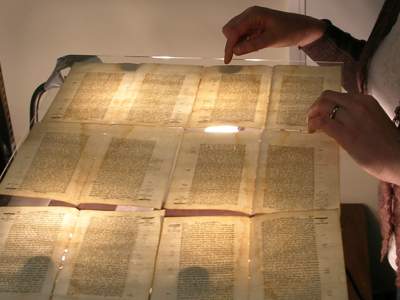
There is a nice collection of essays on CH Working Papers on Reassembling the Disassembled Book. These are some of the papers that were presented under that theme at the Society for Digital Humanities meeting in 2007 in Saskatchewan which I blogged before. One paper I was pleased to read because it went by too quickly at the conference is Richard Cunningham’s Dis-Covering the Early Modern Book: An Experiment in Humanities Computing. This paper describes and theorizes a one day experiment Richard and others tried in taking apart an early modern book, scanning it, and reassembling as a electronic book. I love these “what can you do in a day experiments.”
Bad enough we had all agreed, before gathering in Victoria, to disassemble one book; in the end we discovered we would need to dismantle two books to achieve our representational goals. This need to use (or perhaps more appropriately abuse) two books rather than one was a direct result of the planning we undertook prior to entering the ETCL. We began with the basic idea of digitizing an early modern book and defining the project so that it could be completed in a single day. The opportunity for this project came in the form of a selection of early modern books that had been rescued from the discount bins of a couple of London’s antiquarian book stores. (Richard Cunningham, Dis-Covering the Early Modern Book: An Experiment in Humanities Computing)
There are links in the paper to a number of videos and images, including a long video that shows them cutting the pages. Not unlike my Text in the Machine series of photos, but for a far more important purpose.



